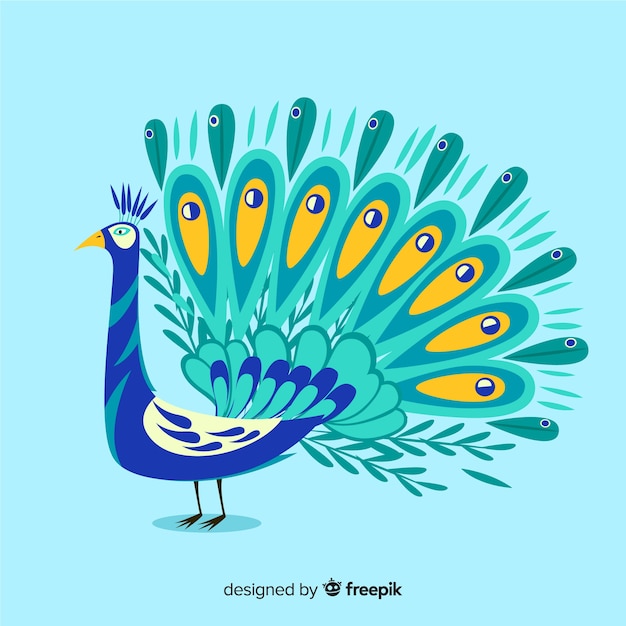Interesting tidbits about peacocks

Peacocks are known for their vibrant and mesmerizing plumage.
The male peacock, called a peafowl, is the one with the extravagant feathers.
A group of peacocks is called a party.
Peacocks can fly, but their size and feather length can make it challenging.
The train feathers of a male peacock can reach up to 6 feet in length!
The train feathers are not the actual tail feathers but elongated upper tail covert feathers.
The colorful train feathers are used by male peacocks to attract and court a mate.
Peahens, the female peacocks, select their mates based on the size, color, and quality of the train feathers.
Peacocks are native to South Asia, specifically India and Sri Lanka.
Peacocks have been kept in captivity for thousands of years, particularly in royal gardens and estates.
The peacock is the national bird of India, symbolizing beauty, grace, and pride.
Despite their large size and elaborate appearance, peacocks are agile runners.
Peacock calls are not limited to their iconic peacock cry. They can produce a range of vocalizations, including hisses and meows.
Peacocks have excellent vision, capable of spotting predators from afar.
They have sharp spurs on their legs, which are used for self-defense.
Peacocks are omnivores, and their diet consists of plants, insects, and small reptiles.
They have a particular affinity for eating poisonous snakes, making them beneficial in certain regions.
Interesting tidbits about peacocks part 2
Peacocks have strong muscles in their neck and throat, allowing them to produce powerful vocalizations.
The train feathers of peacocks are shed and regrown annually, typically during the molting season.
Peacocks are social birds and can often be found in small groups called flocks.
They are excellent swimmers and can paddle across small bodies of water.
Peacocks have been admired for their beauty and elegance throughout history, appearing in various cultural and religious artwork.
The vibrant colors of the peacock’s feathers are created through a combination of pigmentation and light-reflecting structures called photonic crystals.
The distinctive eyespots on the peacock’s train feathers serve as a visual distraction to predators, making it difficult to focus on the actual bird.
The peacock’s train feathers are typically shed after the mating season to reduce weight and enhance mobility.
The train feathers can be used as a makeshift umbrella to provide shade on hot days.
Peacocks are highly adaptable and have successfully established feral populations in various parts of the world, including the United States.
The average lifespan of a peacock in the wild is around 15-20 years, while those in captivity can live up to 25 years.
Peacocks are often featured in folklore and myths, representing qualities such as beauty, immortality, and protection from evil spirits.
In Hindu mythology, the peacock is believed to be the vehicle of Lord Murugan, a deity associated with war and victory.
Peacock feathers are considered auspicious in many cultures and are often used in rituals and ceremonies.
In the wild, peacocks establish territories called leks, where males perform intricate courtship displays to attract females.
The iridescent coloration of the peacock’s feathers is caused by microscopic pigments that reflect light differently depending on the viewer’s angle.
The peacock’s feathers are so durable that they can withstand harsh weather conditions and remain intact for years.
Peacocks have excellent camouflage abilities, blending into their surroundings when necessary.
The peacock’s crest acts as a mood indicator, rising and falling based on its emotional state.
Peacocks have been domesticated in some areas for their ornamental feathers and as pets.
Ancient Greeks believed that peacock flesh did not decompose after death, associating them with immortality.
Peacock symbolism is prevalent in many cultures, representing integrity, beauty, and the cycle of rebirth.
The iridescent blue color in a peacock’s plumage is caused by structural coloration, not pigmentation.
Male peacocks perform intricate dances during courtship displays, involving raising and fanning their tail feathers while making various calls.
Peacock feathers have been used as a fashion statement throughout history, adorning hats, jewelry, and clothing.
Peacocks are often found near human settlements and are considered sacred in certain religious traditions.
The peacock’s large size and showy display make it an easy target for predators, but their alertness and agility help them evade danger.
The beauty of peacocks continues to captivate and inspire artists, designers, and nature enthusiasts around the world.

